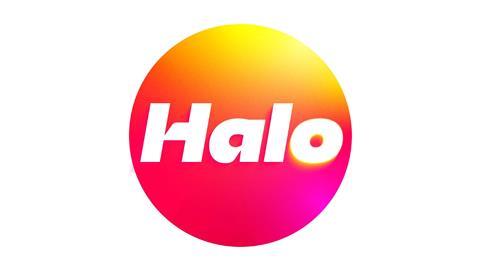Kate Higginson, content editor at eight&four, looks at where the female-focused TikTok channel went wrong

From the same school of thought as the Bic ‘For Her’ pen and Yorkie’s ‘It’s not for girls’ slogan, we have a new release in the Bizarre Gender Stereotypes by Brands series. Sky Sports’ latest TikTok account, Halo, looked to build a fresh female-led sports community when it launched earlier this month, but ultimately took the L after the channel missed the mark by miles. After facing strong backlash from the very community to which it was trying to appeal, Halo was taken down just three days after launching – proof enough that brands in male-dominated spaces still have difficulty connecting with women online.
With content that unintentionally straddled the line between genuine and satirical, online audiences responded in disbelief as the brand doubled down on its ideas of female interests. Perhaps it was bold of us to assume that a broadcaster the calibre of Sky Sports would have gathered enough insight into their target audience to move beyond stereotypes like matcha lattes, Labubu dolls and tampons, but how wrong we were.
What Sky Sports deftly showed in their identification of the growing appetite for women’s sport, it sadly lacked when it came down to execution. As social sentiment has shown, a platform of this kind has clear potential to break new ground with a rapidly expanding audience. So, if another brand or broadcaster were to give it a go, how could they learn from Halo’s downfall and find success in this space?
TikTok as a tool, not a weapon
Launching exclusively on TikTok meant Halo had to establish itself within an already thriving community of female sports creators. That alone was a challenge, with TikTok users notoriously sceptical of brands entering entertainment spaces without understanding the culture they’re stepping into. If you don’t add value, you get called out fast.
TikTok rewards creators that spark conversation and foster shared experiences. For a broadcaster, the opportunity here is enormous, but only when it’s led by insight and moulded by people who live the culture. If the Halo team did conduct any social listening or audience profiling, it certainly didn’t translate. The strategic decisions here reduced women to the most basic of interests, alienating the very audience they claimed to represent. With a wealth of insightful, authentic female voices in sport, Halo could have looked very different if they’d been able to help guide it.
As a platform known for its unhinged content, some TikTok users theorised that Halo was actually playing into this with a ragebait/rebrand strategy, parodying stereotypes to drive initial engagement before then cleverly pivoting to truly represent its target group. Although the second part sadly never unfolded, could this instead have been the crucial play in a strategy designed to play into TikTok culture?
Style echoes strategy
Halo may now go down in history as a case study in How To Alienate Your Audience 101, and its identity as Sky Sports’ ‘little sister’ was the architect of it all. Peppered with pink, glitter and hearts, Halo’s visuals were a far cry from the energy and edge of female sports creators, and the language used alongside them only reinforced that gap.
The message was clear – that a dedicated place for women in sport needed to be watered down and infantilised just to be palatable, as though female fans needed the softer version of the main channel while the serious sport conversations carried on elsewhere. Given that sports are often still gatekept from women unless they prove their knowledge, that approach brings some harmful optics. Instead of recognising that female sports fans already exist, Halo somehow assumed that their vision, where sports are correlated to tampons, represented the community better. At best, it was an outstanding lack of awareness, and at worst, a damaging message that sidelined female perspectives.
Female fans are already embedded deep within sports culture, and Sky Sports’ creative approach only exposed how little attention they’d been paying to a major part of their community. Women in sport want visibility, respect and equal footing. Halo offered cuteness instead, and the internet swiftly shut it down.
The team talk
It’s clear that missteps like these were avoidable, and with a stronger foundation, platforms like Halo could do important work in growing and furthering female audiences. If Sky Sports were to try again, or another brand wanted a shot on goal, here’s our Mesut Özil-style assist:
1. Gather Real Perspectives – Meet your audience where they’re at, gathering commentary and intel from the source. Platforms like Reddit are goldmines for sentiment and insight.
2. Be Social-Fluent – Success on TikTok relies on inside knowledge of the platform’s quirks and culture, as well as how specific communities behave. Be an active listener before trying to set the tone.
3. Collaborate with Established Creators – Harness the knowledge, audience and authority of existing creators in your chosen space, using this to guide tone and content direction.
4. Test Before Launch – Use focus groups or communities made up of your target audience to test the waters before hitting publish… and trust their opinion!
5. Amplify Stories that Matter – Spot the themes and narratives that interest your community and help further them. Observing what’s popular keeps your audience invested, not misrepresented.
6. Leverage Real Personalities – Spotlight fans, athletes, creators and presenters in their authentic voice, not as brand spokespeople. Show you understand your audience by speaking as they do.
7. Prioritise Participation over Performance – Give your community reasons to get involved. Invite fans to stitch, respond, debate and join in with your content.
Winning the match point
TikTok can lift communities, spark connection and give fans a sense of belonging, but it can also deliver a harsh wake-up call when a brand misreads the people it hopes to reach. Halo didn’t fail because women don’t want sports content, it failed because old habits in sports marketing still linger in ways many hoped had faded.
Despite the off-field distraction, the momentum behind women’s sport keeps growing. Fans are hungry for content that treats them with respect, reflects their genuine selves and evolves with the culture they create. The next brand or broadcaster willing to participate with care will open the door to something far more exciting. That future is within touching distance, and we couldn’t be more ready for it.

Kate Higginson is content editor at eight&four





No comments yet